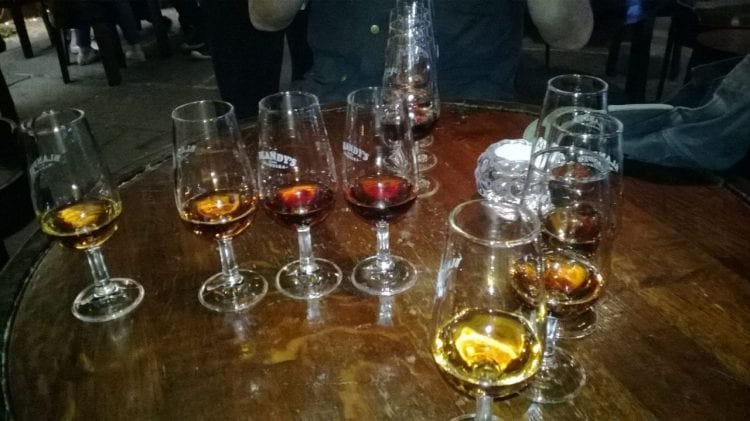Madeira wine is a fortified wine produced and bottle in on the Portuguese Madeira islands, just off the east coast of Portugal (also the namesake of the wine). It is a type of wine that uses a specific grape variety, using unique techniques that have been passed through generations. Read on to discover all you need to know about Madeira wine!
Madeira wine – What you Need to Know
Sweet or dry?
First up, what does it taste like? Typically, it is a mono-varietal wine, which each varietal representing four styles of Madeira – dry (seco), medium-dry (meio seco), medium-sweet (meio doce) and sweet (doce).
Where did Madeira wine come from?
Madeira wine dates back to the age of discoveries in the 15th and 16th centuries when sailors used to transport wine on ships during their long voyages. The wine was transported in barrels and subject to temperature variations. On returning to the island, it was discovered that the wine actually tasted much more aromatic and flavourful than it had before it left. From 1730 onwards, barrels of Madeira wine was deliberately sent on long voyages in order to bring out these qualities in the wine. Read more about finding the best Portuguese wine here!
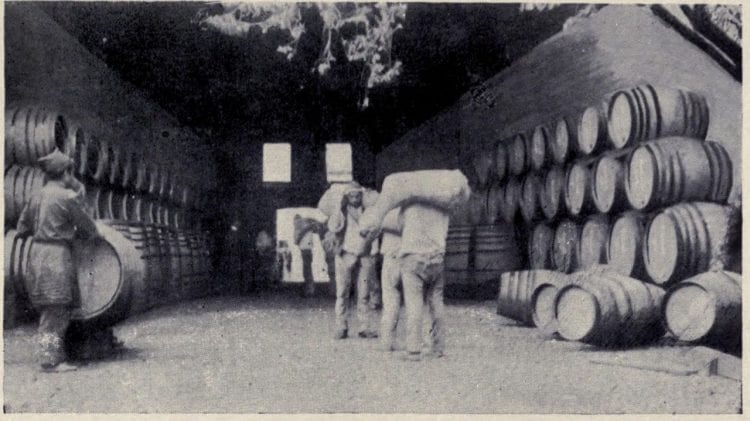
How it the Madeira wine made today?
All grapes are first analysed, classified, weighed and processed to remove stalks, then crushed to remove the seeds and skins. Stalks are treated as waste but the seeds and skins are collected and used for agricultural feed. Different vinification methods are used, according to the different grape varieties. The wine is then fermented in temperature-controlled stainless steel tanks. The rich (sweet) wines are fortified after approximately 24-hours while the dry wines are left to ferment for 7 days before fortification. The ageing is replicated with two modern methods: “estufagem” and “canteiro”.
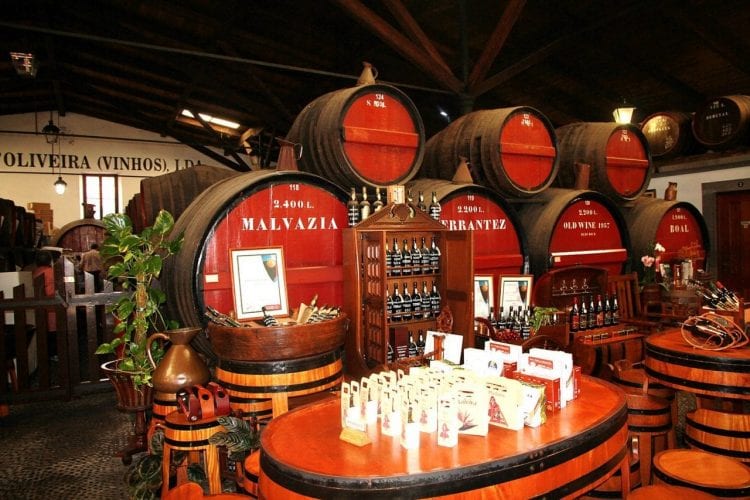
Estufagem
A process introduced by a local physician, Pantaleão Fernandes, in 1794 that is only used with the Tinta Negra grape in the production of 3-year old wines. Once fortified, the wine is transferred to large tanks and slowly warmed up to temperatures of 45°C over four months. They are then stabilised in wooden vats for an extra two years.
Canteiro
This process ages wine in casks for a minimum period of 4 years, stored under the rafters of warm attics, where they are exposed to the natural warmth of the sun. Wines produced using this system, are stored in casks by the variety name vintage year. The casks are never 100% full, allowing the wine to oxidise and transform the primary aromas into tertiary aromas known as the “Madeira Bouquet” of spices, roasted nuts, dried fruits, smoke, and more. After a few years on the highest and warmest level of the attic, the casks are moved successively lower and thus cooler levels. This process is completely natural and used for all premium wines.
Why does the Madeira wine last so long?
Madeira wine became fortified over time, first introduced in the mid-18th century. Today, all wines have between 17.5 and 21 % alcohol strength. The unique heating system and ageing techniques make this fortified wine virtually indestructible.
Madeira wine brands
- Blandy’s – Part of the Madeira Wine Company, there are many types of vintages, most bottles aged 5 years or more.
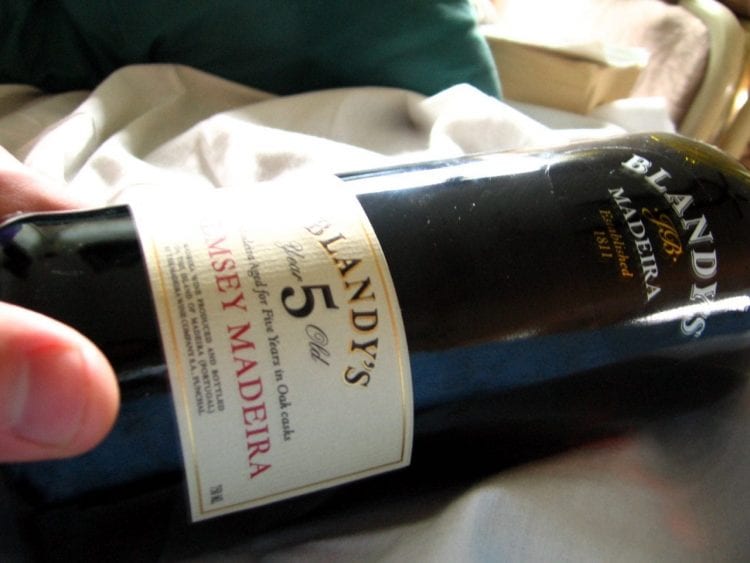
- Barbeito – You can find vintage varieties, but the winery also produces excellent younger wines.
- Cossart Gordon – Features many well-aged, roasted flavours, and complex pictures of tastes. Great if you like strong flavours and aromas!
- D’Oliveiras – An old producer specialising in the vintages.
- Henriques & Henriques – Uses mainly new oak barrels, so better for younger wines or cocktail wines.
- Justino’s – Producing everything from traditional vintages to the finest quality Madeira wine, with a pleasant level of acid that balances the additives and sweet tastes of the wine.
Can the Madeira wine be used for cooking?
Yes, Madeira wine can also be used extensively in cooking, the same way you would use dry sherry. Check out this Beef Wellington recipe from Jamie Oliver.
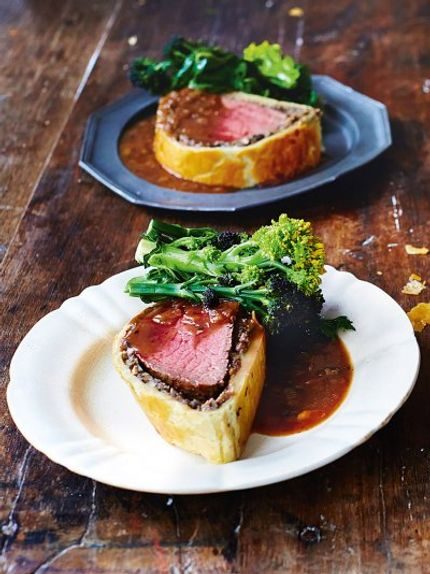
Ingredients 1 kg centre fillet of beef, trimmed (the timings below work perfectly for a fillet of roughly 10cm in diameter) olive oil 2 knobs of unsalted butter 3 sprigs of fresh rosemary 1 red onion 2 cloves of garlic 600 g mixed mushrooms 100 g free-range chicken livers, (cleaned) 1 tablespoon Worcestershire sauce ½ teaspoon truffle oil, (optional) 50 g fresh breadcrumbs 1 x 500 g block puff pastry 1 large free-range egg FOR THE GRAVY: 2 onions 4 sprigs of fresh thyme 1 heaped teaspoon blackcurrant jam 100 ml Madeira wine 1 heaped teaspoon English mustard 2 heaped teaspoons plain flour, plus extra for dusting 600 ml of organic beef stock (hot) Method Preheat a large frying pan on high heat. Rub the beef all over with sea salt and black pepper. Pour a good lug of oil into the pan, then add the beef, 1 knob of butter and 1 sprig of rosemary. Sear the beef for 4 minutes in total, turning regularly with tongs, then remove to a plate. Wipe out the pan and return to medium heat. Peel the onion and garlic, then very finely chop with the mushrooms and put into the pan with the remaining knob of butter and another lug of oil. Discover the rest here. Discover more about Portuguese cuisine, with this guide here!
How to Make Madeira Wine Sauce
Madeira wine sauce is an excellent addition to a dish of chicken, beef, pork, or other grilled/roasted meats. Here’s a simple recipe by Martha Stewart (full ingredients list on the website):
- Melt butter over medium heat in a medium skillet. Add shallots and cook until translucent. Add the Madeira wine, and cook until liquid has evaporated. Add grace de viande and stock then bring to a boil and simmer.
- Dissolve cornstarch in heavy cream. Whisk into the Madeira wine sauce and cook, stirring until it thickens. Season with salt and pepper.
- Stop heating, and pass through a sieve. Keep warm in a double boiler or heatproof bowl set over a pan of simmering water.
Where Can you Buy and What are the Prices of Madeira Wine?
You can buy Madeira wine at any supermarket, and some mini markets in Portugal. If you aren’t in Portugal though, you can, of course, purchase the wine online. Some online stores include:
- Amazon, with wine starting from as little as 10 Euros!
- Wine.com, with prices starting from 10 Euros.
- Garra Feira Soares, prices starting from 9 Euros.
- Wine House Portugal, prices starting at 2 Euros (not sure if legitimate!)
- Drizly, prices starting from 5 Euros.
Prefer beer over wine? Read all about Portuguese beer here!
Are you Going to Madeira Island?
Going to Madeira Island? Lucky you! Why not book a wine tour for a day of taste-testing and learning more about this Portuguese wine? The people at Discovering Madeira offer a unique one-day tour, for €130, that allows you to taste several wines from Madeira. The day starts with a visit to the famous vineyards where you will learn about the history and magic of the Madeira Wine. You will taste many varieties of fortified, reds, whites, and rose wines, throughout the day. Lunch and pickup are also included.
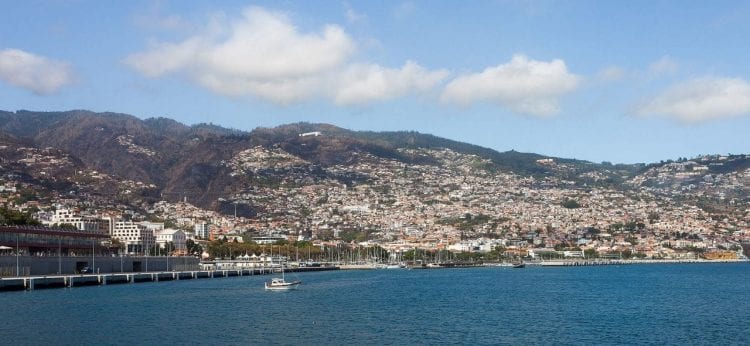
Where to Taste Madeira Wine
And if you’re visiting Madeira for a few days, you can also visit these locations to taste some of the island’s best wine:
- Barbeito Madeira – The Barbeito vineyard, and one of the most famous vineyards producing Madeira Wine in Madeira.
- Blandy’s Wine Lodge – Located in the centre of Funchal, allows visitors the opportunity to taste the Blandy wine varieties, also the oldest on the island.
- Pereira d’Oliveira – A great place for trying Madeira’s large variety of wines. Be sure to reserve a table in advance.
- Artur de Barros e Sousa – A charming spot to try Madeira’s finest wines.
- HM Borges – Very informative and friendly spot in Madeira, just out of the centre.
Read more about the best wine-tasting tours in Portugal here.
